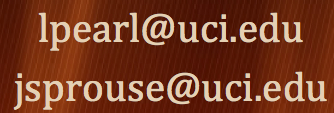Abstract:
Inanimacy in the Input: How a very infrequent cue can still be very powerful
One of the fundamental questions about language learning is how learners determine the structure of sentences in which "the true grammatical relations which hold among the words in a sentence are not expressed directly on its surface structure" (C. Chomsky 1969, p. 6; see also N. Chomsky 1965, p. 22). In other words, how do children figure out the structure of a sentence like "John is daxy to please" without first knowing what 'daxy' means? If 'daxy' means "easy" the sentence subject is interpreted as the object of the lower predicate, but if 'daxy' means "eager" the sentence has a very different interpretation and structure. In this talk I argue that encountering an unknown predicate (like 'daxy') with an inanimate subject can give children a clue to the underlying structure of the sentence, even if inanimate subjects are encountered very rarely in the input. In addition, I show how the cue of inanimacy can help not only with 'tough'-constructions but also raising-to-subject and unaccusative constructions, and I discuss implications for acquiring the passive.
